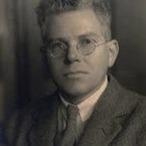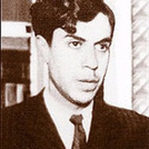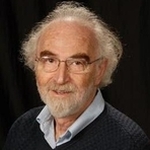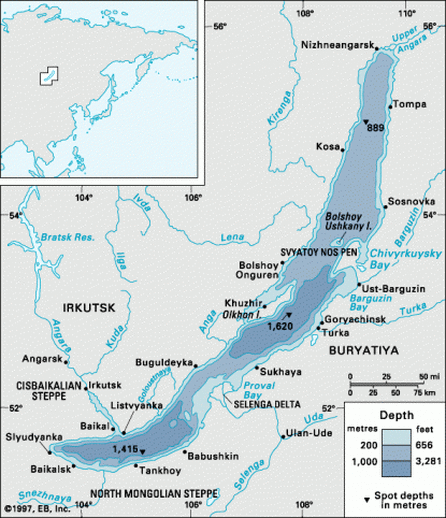 Lake Baikal, one of the most beautiful and spiritual places on Earth, is to be found in the south-eastern part of Siberia, near the border with Mongolia. Siberia makes up more than 75% of the Russian Federation. It is near to the cities of Irkutsk and Ulan-Ude, and is like a mystical oasis, surrounded on all sides by mountains. This highest mountain is in the Ulan Burgasy Range, and is 9316 feet (2840m) high. Ever since the first Russian explorers visited Lake Baikal, it has provoked much interest and research. In fact, the first official scientific expedition, ordered by Peter the Great, began in 1723. It is only with modern day technology, however, that discoveries relating to the deeper regions of the lake have come to fruition. The word “Baikal” is thought to be derived from Kurykan, a language spoken by the local Turkic peoples around 1,300 years ago, which means “much water” or a “wealth of water”.  It is also the world’s deepest lake, at some points stretching more than a mile down beneath the surface. It is 5,380 feet (1,640m) deep, and holds 5,500 cubic miles (23,000 cubic kilometres) of water, with estimates of about 10000 feet (3300m) of sediment below that! It’s crescent shape is 12,209 square miles (31,500 square kilometres) in total, being as it is 393 miles (635 kilometres) long by 30 miles (48 kilometres) wide. That makes it the size of Belgium! It is so huge, that the locals call it a Sea. Lake Baikal contains approximately 1/5, or 20%, of the worlds freshwater: that makes it the biggest freshwater lake on the planet! It has more than all of America’s Great Lakes combined. It has 26 islands, the largest of which is called Olkhon Island. At 30 million years old, it is also the world’s oldest lake. Most lakes usually survive for about 15,000 years before disappearing, yet Baikal is growing at about 0.8 inches (2cm) a year! It is even thought that, at some point in the far future, Baikal will become an ocean, stretching across Asia. The reason for its expansion is that it is located in a region where three tectonic plates intersect. Every few hours, there is an earthquake in the region (thought not usually directly by Baikal itself), and usually, there is a large earthquake every two years. 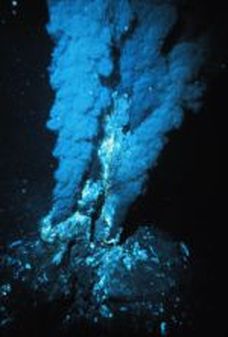 Because of all the seismic activity, there are many thermal vents on the floor of the lake, as well as in the surrounding area. While the vents on the shoreline are used as thermal spas, baths and medical treatments, the ones under the water have a very different use. The underwater vents increase the circulation of the water in the deeper parts of the lake, allowing a great oxygenation of the lower layers. In fact, the oxygen levels in Lake Baikal are the most concentrated in its lower levels than in any other lake in the world. These very high levels of oxygenation are the reason for the huge variety of flora and fauna in the lake, and also for the number of different species able to survive in its lower regions which, without the vents, would be inhospitable to life. As a result, Lake Baikal is one of the most biologically diverse places on Earth, home to more endemic species than any other lake. About 70% of the 2600 species of Flora and Fauna can be found only in the Baikal area. As well as the various species of Bears, Foxes, Eagles, and Insects, there are some quite interesting animals for you to see. 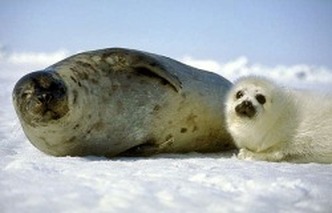 The Nerpa is one of very few species of freshwater seal in the world. The adults are a beautiful silver-grey in colour, while the pups are a fluffy white ball of cuteness. To enable them to survive in the deep, cold Lake Baikal, they have developed some distinct physical and social attributes. With four more pints of blood than other seals, the Nerpa can survive without air for up to 70 minutes, and can dive to almost 1,000 feet. Also, their dens are hidden under the snow and ice, and are entered from below the ice layer, making them much more difficult from predators to find. They tend to live in the northern parts of the lake, and also near the Ushkanye islands, between Olkhon Island and the Svyatoy Nos Peninsula. 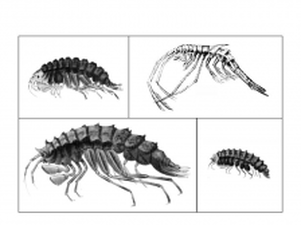 Another interesting species is the large population of Baikal Epishura, a crayfish, about 1.5mm long, which eats algae and other particles in the lake. It is because of these crayfish that the water is as clear as it is. it is so clear that you can actually see up to 130 feet below the surface! It is said that you can drink the water from the surface of the lake, but I've not had any corroboration of this, so check before you try! Also in the lake is the world's largest flatworm. It grows to about 16 inches long and feeds on fish. In fact, it hunts them! Imagine that. 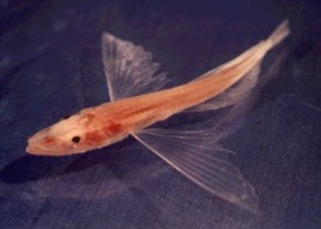 Have you ever heard of a Golomyanka? No? Well, it's a type of fish, and an interesting one at that. It is completely translucent and has no scales. As you can see from the picture, it's possible to spy its skeleton through its skin. The body of the Golomyanka is about 30% oil, making it a very fatty fishy indeed. The reason for this strange composition is that it lives across a wide range of pressures, from the deep levels of the lake all the way up to the surface. Its fatty body allows it to adapt. Interestingly, because of its largely fat and oil based body, if you were to leave one on land in direct sunlight, it would melt, leaving only a skeleton and a puddle of oily fat. Nice! 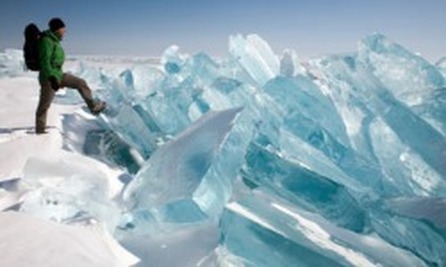 Lake Baikal has always had a special place in the hearts of the peoples of Asia, and is in fact one if its most sacred places. Some Russians even call it their "sacred sea". Often, people prayed to the lake, believing that it had a power that could help then in time of need. It is possible to see the carvings and the remnants of the ancient buildings in the area. Some even believe that Olkhon Island is the birthplace of Ghengis Khan! There are many cultures represented in the area, from Asian Buryat to Siberian Russian. The independant nature of the peoples that live in the area around Lake Baikal has given them a distinct identity. Many people from the area are more 'Siberian' than 'Russian', though they do share many common traits. The main thing, though, about Lake Baikal is the beauty of the area. It is a truly magical place, and somewhere I'm desperate to visit. Hopefully I'll be there soon...
0 Comments
Greenland, home to 57,000 people and a giant ice-cap. At least, that's the case at the moment. The problem is that the giant ice-cap is melting, and it's showing no sign of slowing down. In fact, the melt is speeding up, due largely to warmer summers and a substance called 'Cryoconite'.
Discovered by Arctic explorer Nils A. E. Nordenskiöld in 1870, Cryoconite gives the ice a brown or black colour. It comes to Greenland in the form of airborne particles. Some of these particles come from as far away the deserts of Central Asia, and some are bits of soot from engines and coal-fired power stations, reinforcing the Human dimension of this process. It is the dark colour of Cryoconite which is the problem. As it blackens the ice, it no longer reflects sunlight back into space, instead absorbing more heat causing greater amounts of ice to melt. With the warmer summers in recent years, more Cryoconite from deeper leves of the ice-cap have come to the surface, causing further darkening of the ice. Coupled with the increase of man-made particles, this has produced an accelerating cycle of ice-melt. This increase is causing some of the vast melt-water lakes in Greenland to drain through massive vertical shafts that are being called 'Moulins'. In Mark Jenkins' article in the National Geographic magazine, he says that: "In 2006 a team led by glaciologists from Woods Hole Oceanographic Institution and the University of Washington documented the draining of a two-square-mile supraglacial lake: More than 11 billion gallons of water disappeared into a moulin in 84 minutes, flowing faster than Niagara Falls." He goes on to say that: "Scientists have dumped yellow rubber duckies, sensored spheres, and huge quantities of dye into moulins, hoping to track their journeys and discover where along Greenland's coast the moulins empty. Some of the spheres and dye have been spotted; all the duckies disappeared." This is some thing which scientists will be monitoring over the next few years, as a loss of the Greenland ice-cap could cause a massive rise in sea-levels. Do have a look at this interactive from the same article quoted above, as well as its photogallery. 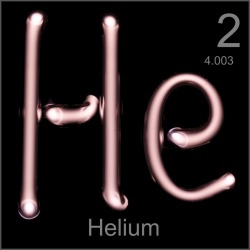 Helium Helium Helium. The second most abundant element in the Universe (Hydrogen being the first), with many interesting properties, yet most people know of it in relation to balloons and a squeaky voice. But there is so much more to this tiny little element. At room temperature, Helium (He) is a gas. Actually, that would be the case in a room built anywhere on the surface of the Earth, even one built at Vostok in Antarctica. That is because its boiling point is −268.93 °C, −452.07 °F, 4.22K (K = Kelvin, the temperature scale that starts at absolute zero. All further temperatures in this article will be quoted in Kelvin). Helium is also the only element that cannot be solidified by reducing the temperature alone, needing 25 Bar of pressure to force it to solidify. Normal sea-level pressure is 1.01325 bar Even this solid, however, will melt at temperatures of about 1K. 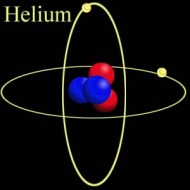 Structure of Helium-4 Structure of Helium-4 Mass and Reactivity. All forms of Helium have 2 protons in the nucleus (the centre) of the atom. In Scientific terms, this is noted as having an Atomic Number of 2 (that is the meaning of the big "2" in the picture above). In the picture on the left, the two red globes represent the protons. The most common isotope (or type) of Helium, Helium-4, has two neutrons in the Nucleus as well as two protons. The blue globes in the picture on the right represent the neutrons. Thus its Atomic Weight is approximately 4 (it is actually 4.002602, rounded up to 4.003 in the picture above). The only other stable isotope is Helium-3, which has two protons and one neutron. Second only to Neon, Helium is the most inert, or reactive element known. All of the elements in the far right column of the periodic table are called the Noble or Inert gases, as they have a complete electron configuration, and it is this which leads to the lack of reactive chemistry in the group (though the heavier elements, such as Krypton, have an extensive chemistry). The electrons for Helium are shown as small gold globes orbiting the nucleus in the picture above-right. 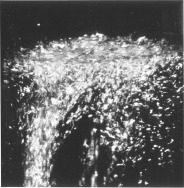 The Superfluid Transition. Liquid Helium is different from most other liquids in that it has two distinct phases. The first phase, known as Helium I, is for the most part a normal liquid (albeit a very cold one). However, the second phase, known as Helium II, has many interesting properties. Helium-4 (the heavier isotope) undergoes a phase transition from Helium I to Helium II at about 2.17K. This temperature is called the 'Lambda Point' (because the graph of the specific heat capacity as a function of the temperature resembles the Greek letter Lambda). Once the Lambda point has been navigated, the phase called Helium II is reached. The transition is marked by an intense bubbling and boiling of the liquid. This occurs because there is a sharp increase in the specific heat capacity. After this point, the liquid becomes completely calm. It is now a superfluid. Click here to see a flim which shows the Lambda Point transition. The transition itself occurs between 6:02 and 6:14. 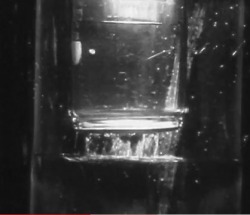 The Effect of Zero Viscosity. Liquid Helium II has the ability to flow through the tiny holes in a porous vessel. The more the liquid is cooled below the Lambda point, the faster it will flow through the nano-capillaries. This is why Helium II has to be kept in a non-porous vessel. The reason this unique ability exists is that liquid Helium II has zero viscosity in some measurable situations. Viscosity is how resistance to stress is measured in a fluid. This effectively means viscosity is the thinkness of the fluid. Marmite is very thick, water is much thinner, and a superfluid like Helium II is very thin. It is for this reason that holes which would not admit water, would allow the Helium II to pass through unhindered, just as some holes that admit water, block the path of Marmite. Interestingly, the liquid that escapes through the porous vessel is actually colder than the remaining liquid. Click here for a video showing the escape of Helium II from a propus vessel.  The Rollin Film. Liquid Heluim II also has the ability to move against gravity and escape from the vessel in which it is being held. It does this by forming a very thin (30 nm thick) film which creeps along the sides of the container, until it finds a warmer area, when it evaporates. This is also known as the creeping effect. The thin film is called the Rollin film, named after the man who first noticed the effect, Bernard V. Rollin. A video of this effect can be seen here. 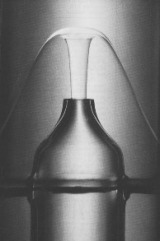 The Fountain Effect. To produce the Fountain Effect, where a continuous flow of Helium can be seen flowing against gravity in the form of a fountain, the following needs to be done. Firstly, a small heater needs to be installed into a tube with a wide opening at one end and a very small opening at the other. The wide end of the tube needs to be blocked with a porous plug. Next. the tube should be inserted into a bath of Helium II, with the large blocked end below the surface. Once heat has been applied to the heater, the pressure builds up in the tube, and a fountain of Helium II spouts from the small opening at the top of the tube. Click here to see a video of the Fountain Effect. 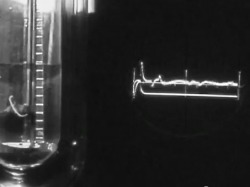 Second Sound. In Helium II, heat is carried by waves, rather than by the normal process of diffusion. This is slightly more difficut to describe in non-scientific terms without illustration, so I shall leave you with the video for this one. In part two, I will discuss the uses and the collection of Helium-3. This playlist from YouTube has all of the videos linked above in order, if you want to see the whole thing:http://www.youtube.com/view_play_list?p=442F47F12D99C4D2 What is happening to the Honeybee? Why are they disappearing, and what does that mean for us? The videos below give some information about the fate of the bees. Pestacides, disease and "colony collapse disorder" all play their part in this continuing issue. Jeff Pettis, Research Leader at the USDA Bee Lab states that:
“We obviously think it’s more complicated than we first believed as in we don’t believe that we’re looking for a single virulent pathogen, although that can’t totally be ruled out. At first we were thinking that we’d find a single causative agent, a virulent pathogen sweeping through the bee population, and that doesn’t appear to be the case.” Worringly, this is the fourth year in a row in which there has been a decline in the bee population. In the U.S. in 2007, beekeepers lost 32 percent of their colonies. In 2008 they lost 36 percent. In 2009, 29 percent. It is highly likely that this year, the decline will be as bad or worse. In many cases, when a hive has been abandoned, the remaining honey is not being taken by other bee colonies. This is also worrying as it is normal for bees to take honey from a failed colony. If the bees don't want it, surely there must be something wrong with it! From a human perspective, many people make their living from bee-keeping, and from crop-farming. Without polination, crops are at risk, and those making their living from the production of honey could also loose their livelihoods. This is a big probem for third world countries. The organisation Bees for Development are doing good work in this area. Please check out their website. While browsing the website of the Institute of Physics (IOP), I found a couple of interesting stories I thought I'd let you all know about. 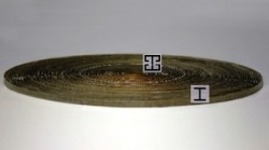 Electromagentic absorbing device Electromagentic absorbing device The first is that Chinese researchers have created an "electromagnetic absorbing device for microwave frequencies". It is made of a thin cylinder of 60 concentric rings of metamaterials, each of which is imprinted with alternating patterns, some of which resonate, and some of which do not. Its importance is that it is able to absorb microwave radiation, acting as an "electromagnetic black hole", which has led to comparisons with black holes in space, which absorb matter and light. Qiang Cheng and Tie Jun Cui, the designers and creators, state that: "Since the lossy core can transfer electromagnetic energies into heat energies, we expect that the proposed device could find important applications in thermal emmitting and electromagnetic-wave harvesting." The second thing I saw was that UK researchers found that the ash cloud from the Eyjafjallajökull eruption seemed to contain "a significant and self-renewing electrical charge". Measurements from the weather balloon sent up into the skies in Scotland led scientists to conclude that: "Neither energy from the volcanic source - more than 1200 kilometers away - nor weather conditions could have been responsibe for the position of the charge found." These findings could have profound consequences in predictions relating to the effects of volcanic plumes on aircraft. All information comes from the IOP website, no copyright infringement intended. Please check out the IOP website for more interesting stuff. |
Categories
All
Archives
November 2013
|
MOST VIEWED POSTS
© James Edward Hughes 2013
 RSS Feed
RSS Feed

